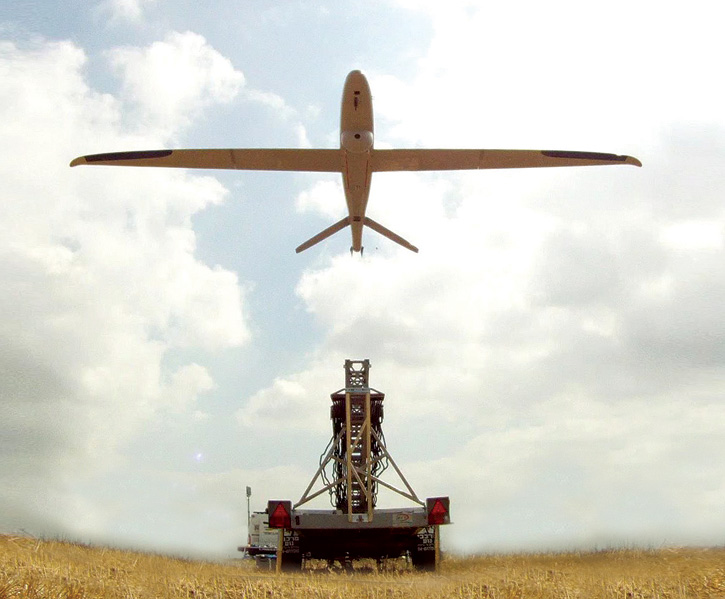
Elbit Systems will be unveiling its latest small, unmanned aerial system (UAS) – the Skylark 3 – at the Singapore Airshow 2016. Skylark 3 extends the company’s family of small UAS, introducing a larger platform designed to support the brigade level. Previous versions of the family include the Skylark 1-LEX and Skylark 2. Both, as the new one, are electrically-powered platforms.

As a growth version of the Skylark I, the performance improvements provided by the Skylark 2 did not place this mini-drone in a competitive position for the missions for which it was designed. That’s what the new model improves.
The new variant – Skylark 3 – is a smaller platform, providing improved performance over the previous model. Discarding the former’s podded payload, for a smooth, low-drag design, Skylark 3 has a lighter maximum takeoff weight (48 kg. for Skylark 3, vs. 65 kg. for Skylark 2) and requires a smaller wingspan of 4.8 meters (vs. 6.5 m. for Skylark 2) providing the new platform better mission endurance (6 hours, compared to 4 for Skylark 2), and a heavier payload carrying capacity (10 vs. 9 kg.). Operational radius has also increased – from 60 km. for the second version, to more than 100 km. for Skylark 3. Skylark 3 can also operate at higher altitudes, cruise at a ceiling of up to 21,000 ft -6,000 above its predecessors.
Launched by a pneumatic launcher, mounted either on the ground or on a vehicle, Skylark 3 offers upgrades such as improved payloads with better target detection, classification and surveillance capabilities. These deliver superior Electro-Optical/Infra-Red (EO/IR) video and photographic imaging in both day and night operations and in adverse field conditions.
To support interoperability, Skylark 3 uses the same advanced technologies and know-how found in other Elbit Systems’ UAS. This feature enables the Skylark 3 to be inducted into service with users that currently operate Skylark 1, – such as the Israel Defense Forces – and plan to extend its use to support combat forces at higher echelons.
In addition to conventional deployment, multiple drones can now be supported through a shared GCS. As such, two Skylark 3 vehicles can be assigned to the same mission simultaneously, so that constant target acquisition can be maintained from two perspectives. This also offers ground forces the ability to extend the flight endurance of their mission significantly by UAS hot-swap.



















